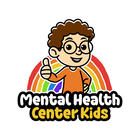|
Key Takeaways:
- Family therapy helps improve communication and strengthen relationships by looking at how family dynamics affect each member.
- Family therapy activities are hands-on ways for families to learn better ways to get along. These activities can be changed or adjusted to fit a child’s age.
- Activities can include communication exercises, trust-building games, creative expression, and play-based methods.
|
Every family faces challenges — ongoing conflict, communication breakdowns, or big life changes like divorce or loss. When these issues begin to affect relationships, family therapy can offer a path forward. An important part of this process involves family therapy activities.
These family therapy activities consist of hands-on exercises that promote trust and teamwork. In this article, we’ll take a closer look at what family therapy is, share activity ideas based on the needs of your family, and offer simple tips to help you make the most of your time together.
What is Family Therapy?
Family therapy is a form of psychotherapy that focuses on improving relationships and communication within families. Rather than putting the focus on one individual, it looks at how family dynamics (patterns of interaction) affect each member [*].
Research shows that family therapy can help with many mental health issues, such as anxiety, depression, substance abuse, and behavior problems in children. It’s also useful during major life transitions [*].
Consider this example: A family with a teenager struggling with anxiety may go to therapy to understand what the teen is going through, learn how to support them, and improve communication. A therapist would then use activities like problem-solving to teach helpful skills.
Family Therapy Activities to Strengthen Family Bonds
Some family therapy activities focus on improving communication, while others build trust, solve problems, or give family members a creative way to express themselves. There are also options involving play for younger children.
Below, you’ll find a variety of ideas for your family.
Communication and Listening Activities
-
Feelings circle - Each family member takes a turn sharing how they feel and what’s been on their mind, using “I feel…” statements. Through this activity, family members become more comfortable discussing their feelings.
-
Emotion charades - Write different emotions (like anger, excitement, nervousness, or joy) on slips of paper. Players take turns acting out emotions like anger, excitement, or worry while the rest of the group guesses what feeling is being portrayed.
-
Pass the message - This is a fun and simple game where a message is whispered from one person to the next until it reaches the last family member, who says it out loud. The final message is usually quite different from the original, which shows how easily information can get distorted.
Trust-Building and Cooperation Activities
-
Build a tower - In this activity, families work together using materials like paper, tape, or marshmallows to build the tallest tower possible. This helps family members practice decision-making and supporting each other’s ideas.
-
Blindfold obstacle course - One person is blindfolded while another guides them through a simple path using only verbal instructions. Rotate roles so everyone gets a chance to guide and be guided.
-
Group drawing - Family members take turns adding to a shared drawing without speaking. Since no one can talk, it also helps family members practice tuning in to each other’s actions and ideas through observation, not words.
Problem-Solving and Conflict Resolution Activities
-
Family problem jar - Write down common family challenges on individual slips of paper (e.g., “sharing chores,” “screen time limits,” “sibling arguments”) and place them in a jar or bowl. During your family activity time, draw one slip at random and work together to come up with possible solutions.
-
Role reversal - Family members act out a recent or common conflict, but with a twist — they take on someone else’s role in the situation. The goal is to help everyone understand how the other person might be feeling.
-
Conflict scripts - As a family, list common arguments or tricky moments you’ve experienced. Then, work together to rewrite those situations using healthy communication and respectful problem-solving.
Creative and Expressive Activities
-
Draw your feelings - Each person draws a picture that shows how they’re feeling right now or how they felt during a recent family event (such as a disagreement or celebration).
-
Family coat of arms - Design a family crest with symbols representing values, strengths, and traditions. This helps build identity and shared meaning among family members.
-
Vision board - Use magazines, drawings, or printouts to create a collage showing family goals and dreams. The final output becomes a visual reminder of what the family stands for and is working toward.
Fun and Play-Based Activities for Younger Children
-
Puppet show talk - This activity gives parents insight into their child’s thoughts in a non-threatening way. Children also find it easier to express their feelings through characters rather than directly. Here, they use puppets to act out emotions and common family situations.
-
Emotions dice game - Create a large dice with different feelings written or drawn on each side (happy, sad, angry, excited, etc.). When a child rolls the dice, they name a time they felt that emotion.
-
Emotions freeze dance - Play music and have everyone dance around the room. When the music stops, call out an emotion and have each family member freeze in a pose that shows that feeling.
Tips for Making Family Therapy Activities More Effective
Before starting any activity, make sure everyone knows it’s a judgment-free space. Remind family members that it’s okay to have different feelings or opinions — and that the goal is to listen to and understand one another better, not to be perfect.
It also helps to choose activities that match your family’s ages and attention spans. Younger children respond best to movement, art, and play, while teens prefer creative expression or real-life scenarios. Keep things light and fun!
Moreover, remember that family therapy activities are not one-time fixes. Instead, each activity can be used as the beginning of an ongoing dialogue for practicing respectful communication. After completing an exercise, families can talk about what worked, what felt hard, and what they learned about each other.
The Bottom Line
No family is perfect, but it’s possible to grow stronger together. The good news is that families don’t have to face these challenges alone. We hope these family therapy activities inspire connection, laughter, and healing in your home!
If you’re looking for more structured resources to support emotional growth, be sure to check out our Coping Skills Worksheets.
References:
- Crane, D. & Morgan, Triston. (2007). The efficacy and effectiveness of family therapy.
- American Psychological Association. (2023, November 30). How psychologists help with anxiety disorders. https://www.apa.org/topics/anxiety/disorders





















































